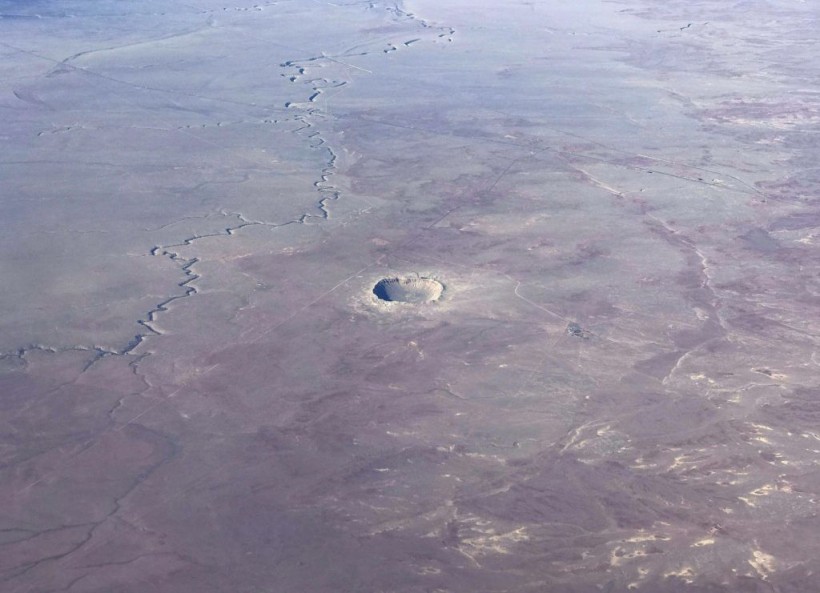Beneath the expansive landmass of Australia lies a potentially massive enigma waiting to be unveiled. Geologist Andrew Glikson explains in an article the possibility of a colossal asteroid crater that might be concealed beneath the continent's surface.
This revelation gains significant weight as all indicators point towards this hidden crater surpassing all known craters on Earth in terms of sheer size.

The Meteor Crater near Winslow, Arizona, is seen from a plane Januray 30, 2017.
History of Earth's Asteroid Bombardment by Asteroids
Historically, Earth was bombarded by asteroids that until now remain a mystery largely because of the gradual erosion process that erodes land materials over extended periods. So when an asteroid hit Earth and formed a crater, erosion for thousands to millions of years often obscures them and that is why not many are known or identified today.
Sometimes, these structures can be concealed by sediment accumulation or even erased from a phenomenon called subduction in which tectonic plates collide and slide beneath one another into Earth's mantle.
On the other hand, recent geophysical revelations are bringing light into asteroid craters that could span tens of kilometers in diameter. These discoveries could reshape how the world views Earth's geological evolution over vast periods. Groundbreaking insights into impact "ejecta," the materials expelled from a crater upon impact, have been pivotal in these findings.
Scientists propose that the earliest layers of these ejected materials, found in ancient terrains globally, might signify the culmination of the Late Heavy Bombardment of Earth. Emerging evidence indicates that Earth and other Solar System planets were subject to intensive asteroid collisions until approximately 3.2 billion years ago, followed by intermittent impacts since.
Some significant impact events align with mass extinctions, such as the Alvarez hypothesis, linking a massive asteroid impact around 66 million years ago to the extinction of non-avian dinosaurs.
READ ALSO: Earth Has Three Times Higher Risk of an Asteroid Impact Than Previously Thought, NASA Warns
Hidden Massive Asteroid Beneath Australia
Glikson's study, titled "Geophysics and origin of the Deniliquin multiple-ring feature, Southeast Australia" published in the journal Tectonophysics, unveils the possible massive asteroid crater beneath Australia.
Known as the Deniliquin structure, the study suggests it might span over 320 miles (515 kilometers) in diameter, potentially surpassing the largest confirmed impact structure-the Vredefort Crater in South Africa-and rivaling the size of the Chicxulub crater linked to the dinosaur extinction asteroid.
Its existence was first proposed back in the late 1990s by Tony Yeates, who is also a co-author of the current study, initially based on magnetic patterns.
Following an analysis that concluded in 2020, the existence of a colossal structure beneath a section of southern New South Wales was confirmed, although definitive proof of its origin as an impact remains absent. The question arises: how does such a massive formation become concealed under the continent, escaping notice?
Supporting the crater identification are compelling indicators, including symmetrical crust ripples arising from impact-induced extreme temperatures and the presence of "radial faults," a characteristic often observed in other impact sites.
RELATED ARTICLE: Nadir Crater in West Africa Suggests a Second Impact After the Chicxulub Crater From the Asteroid That Wiped Out the Dinosaurs
Check out more news and information on Space in Science Times.














